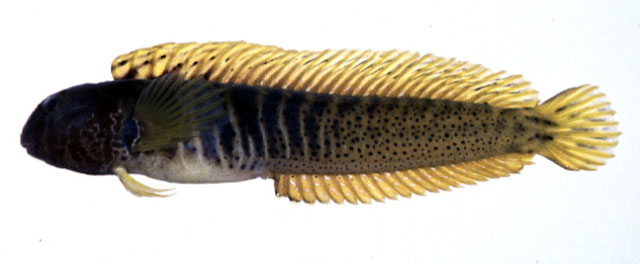| Blenniidae (Combtooth blennies), subfamily: Blenniinae |
| 6 cm TL (male/unsexed) |
|
demersal; marine |
| Northwest Pacific: southern Japan to the Korean Peninsula and the Shantung Peninsula, China. |
|
Dorsal spines (total): 12-13; Dorsal soft rays (total): 20-23; Anal spines: 2-2; Anal soft rays: 21-24. Head without cirri. Jaws with immovable comb-like teeth and a pair of canines posteriorly. Gill opening restricted; lower end usually opposite 3rd pectoral fin ray. Sensory pores in infraorbital and interorbital canals mostly 7 and 3 respectively. Both sexes without occipital crest. |
| Common in rocky shore areas. Adults feed on algae and detritus (Ref. 9137). Oviparous. Eggs are demersal and adhesive (Ref. 205), and are attached to the substrate via a filamentous, adhesive pad or pedestal (Ref. 94114). Larvae are planktonic, often found in shallow, coastal waters (Ref. 94114). |
|
Least Concern (LC); Date assessed: 27 March 2009 Ref. (130435)
|
| harmless |
Source and more info: www.fishbase.org. For personal, classroom, and other internal use only. Not for publication.

